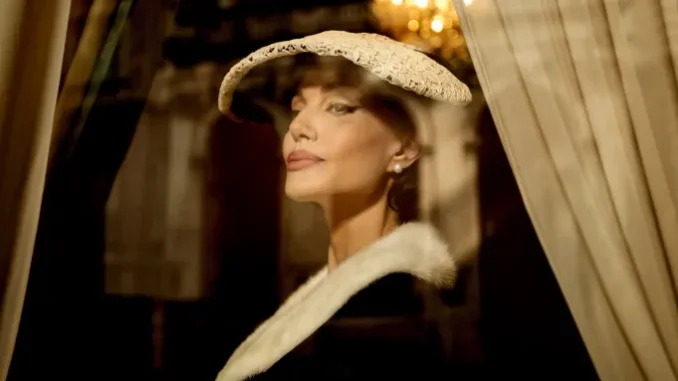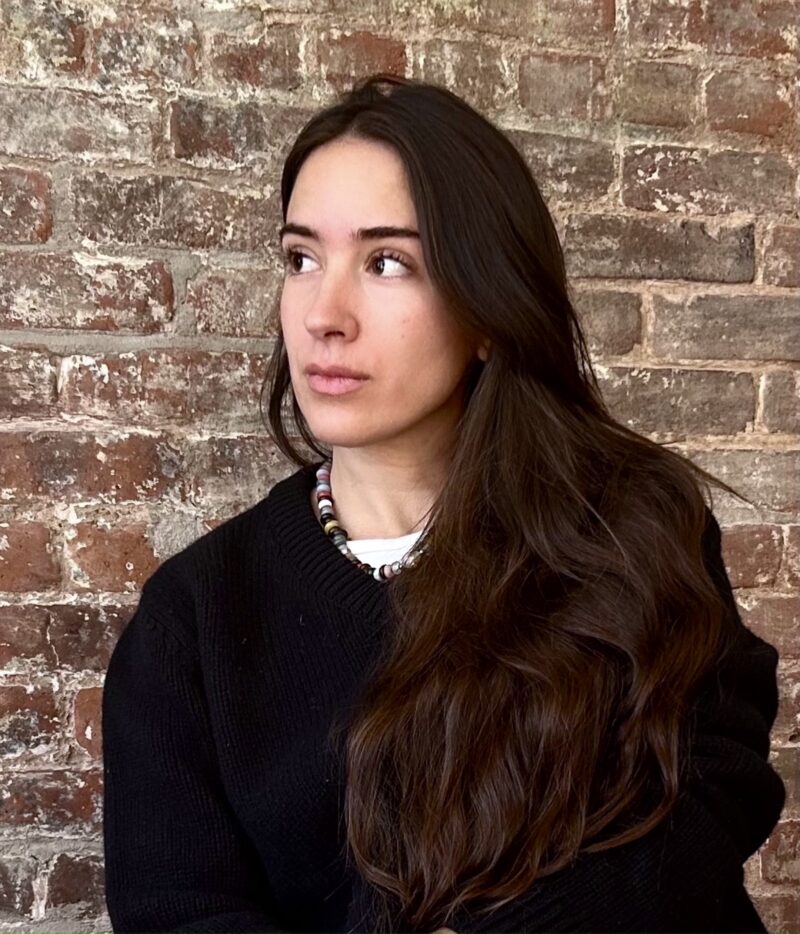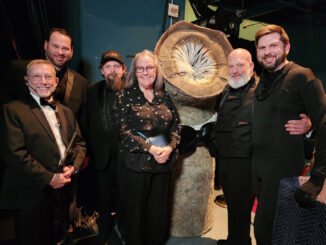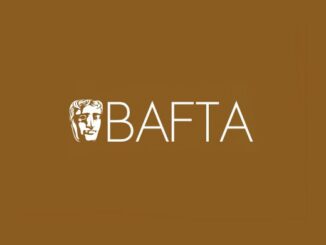
By Rob Feld
Sofía Subercaseaux was bent on finding a career in artistic expression, it was just a question of which one.
Born and raised in Santiago, Chile, she came from a family steeped in the arts—her father was a painter—but she didn’t initially gravitate towards a specific medium. After finishing high school, she decided to attend film school in Chile, where she experimented with directing and screenwriting. She didn’t take to being on set or working with actors, but when she was tasked with editing one of her own short films, she began to feel the creative spark she was seeking.
Her career breakthrough came after college when she worked as a production assistant at a production company in Chile. During this time, her friend, director Sebastián Silva, was preparing to shoot a micro-budget film called “Crystal Fairy and The Magical Cactus,” starring Michael Cera. With no editor lined up and the movie being shot in English, Silva asked if Subercaseaux could help edit, despite her limited experience with Final Cut. It was during the editing of this project that Subercaseaux realized she had found her calling. The film went on to win the Directing Award – World Cinema at Sundance, and suddenly, she was receiving offers. Subercaseaux took the leap, quit her production job, and moved to New York.
Subercaseaux’s most recent work, “Maria,” marks her second collaboration with director Pablo Larraín. The intimate drama, opening in the U.S. on Nov. 27, explores the final week in the life of legendary opera singer Maria Callas (Angelina Jolie). Set in her lavish Paris apartment, the film begins on the day of her death in 1977 and retraces her steps over the preceding days, haunted by her fading voice and memories of past glories. As she battles inner demons, fueled by sedatives and haunted by the ghost of her former lover Aristotle Onassis, the film paints a poignant portrait of a once-great artist trapped by the legend of “La Callas,” unable to reclaim the voice that defined her. The film is bold and moves in and out of time and reality, relying heavily on Jolie’s performance, where much is unspoken or deceptive. Subercaseaux leaned into Larraín’s concept for the film to bring a confident rendering to a nuanced tale.
CineMontage: You didn’t come up through the ranks as an assistant, but is there a moment of influential mentorship you can recall?
Sofía Subercaseaux: I didn’t have the typical mentorship experience or the classical career arc of an editor. Sebastián Silva gave me my first opportunity to cut “Crystal Fairy and The Magical Cactus,” which was completely irresponsible on his part, but we kept working together. He lived in New York too, and really took me under his wing. I moved to New York at 24 and worked on his independent films, which used a lot of improvisation. It felt very free and experimental. Learning to work with that kind of footage made it easier to handle other projects later. In Chile, Sebastián’s producing partners Juan de Dios Larraín and Pablo Larraín, who are leaders in the industry there, also played a big part in my career. I worked more with Juan but Pablo was incredibly generous. He’d say, “Go edit the movie, come back whenever,” and that trust allowed me to grow. I’ve been fortunate to work with friends and even my husband on projects, which makes the experience personal. I’m often involved from early stages—reading scripts, assembling footage—so I feel lucky to have had that kind of creative freedom.
CineMontage: What was your conception from Pablo Larraín as you were brought onto “Maria”?
Subercaseaux: There were a few key things. The script had a very specific structure, and that was an important guide, but Pablo’s deep knowledge of classical music and opera was crucial. He already had an idea of how different operas would tie into the character development. We had some freedom with how we used the music, and certain pieces were like set pieces on their own. Pablo introduced me to this opera world, and though I knew who Maria Callas was, I didn’t know much about her, so I had to dive into her music and the script. Once shooting started, I began cutting right away. There were logistical challenges since Pablo works in Chile and I live in New York with kids in school. But Pablo was incredibly accommodating, adjusting the schedule so I could work from New York. I did the first full assembly on my own, sending him cuts. Then I came over, and we had a short six-week editing period together in the same room. Strangely, the movie just fell into place.

CineMontage: Why do you think that happened so naturally?
Subercaseaux: I think it’s because the movie wasn’t fighting back. Pablo operates the camera, so he knows the footage intimately, and he doesn’t overshoot. Plus, we had a tight schedule, so we were very focused. We weren’t working long hours, but we stayed sharp and got a lot done. Sometimes in an edit, you spend a lot of time fixing things as opposed to just putting things together and exploring ideas. There was not that much to fix with this movie because the photography, production design, and Angelina were all amazing. So, it was what it was. Sometimes big movies take little time to edit. Sometimes tiny movies take forever to edit. It’s the nature of, it’s hard to say why.
CineMontage: It speaks highly of the initial conception, especially for a film so dreamy, that works with flashbacks or takes an audience in and out of time.
Subercaseaux: They were scripted as flashbacks, but it felt like two parallel narratives. You’re grounded in this last week of her life, but also going back. There’s the past, which feels more like full scenes, and the specific timeline of this last week in Paris. Then, there’s the third narrative element—the Mandrax and her hallucinatory world. The structure was clear from the script. We made minor adjustments, like shortening some scenes or switching the order, but we weren’t inventing the movie in the edit. The present timeline was so specific, like three rehearsals, two doctor’s appointments—very precise. There was some wiggle room with the past, but overall, if you read the script, it wouldn’t be that different from the final film.
CineMontage: So much of the performance is in expression and manner. Was that a challenge?
Subercaseaux: She really went for it. It was a big swing, and I think she landed it. She’s so vulnerable in it. It’s a very brave performance because it is so vulnerable, and she really put herself out there. It was truly easy to cut her performance—she didn’t need any help.
CineMontage: Let’s talk about how you used music in the edit.
Subercaseaux: That was really interesting. You can’t do a movie about Maria Callas without using her real voice. It’s not like a rock or pop biopic where you can match the pitch. And you can’t just become the best opera singer ever overnight. Angelina trained for about eight months—voice coaching, posture, everything. We worked with John Warhurst, who’s done all the big music biopics. Angelina sang in all the scenes, and they blended her voice with Maria’s, depending on the scene—sometimes it’s 98 percent Maria, 2 percent Angelina, other times 60 percent Angelina, 40 percent Maria, depending on where she was in her story. What makes it feel real is that Angelina’s actually singing, with all the breathing and mouth sounds. Even in the early edits, you could see it didn’t feel like lip-syncing—it felt like she was really singing. There was no composer—we used instrumental versions of the film’s operas as the score. Pablo knows so much about opera that he has his own little library in his head, so we scored in the edit. For me, there’s nothing more satisfying because when you lock a cut, the movie sounds the way it’s going to sound. It doesn’t feel naked and empty and there’s no temp. The final music would be recorded later but we could lock the cut in terms of the music design.
CineMontage: It sounds like a charmed experience for you.
Subercaseaux: It was! I got to spend two months in Chile, skip most of the winter, and bring my kids for part of it. Pablo was so gracious, giving me room to come back and forth, and it worked out well. It was a group effort, and I’m thankful everyone was flexible.






